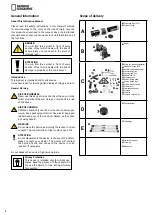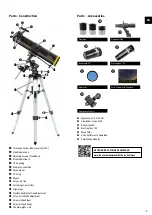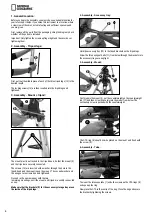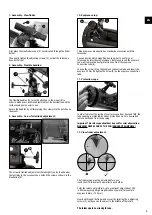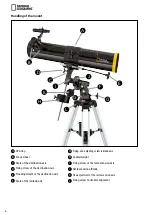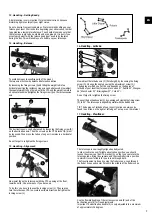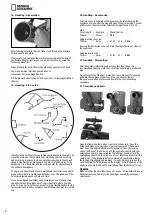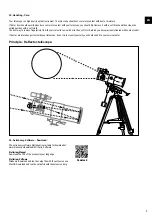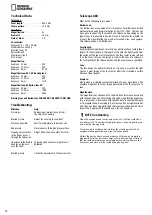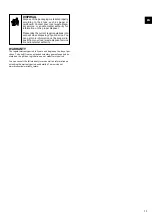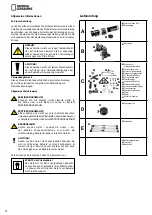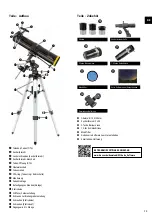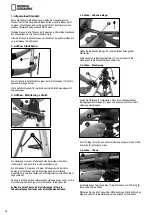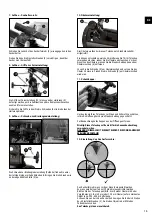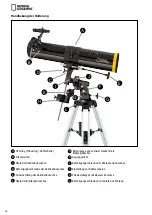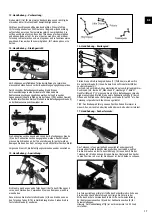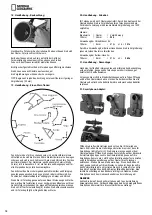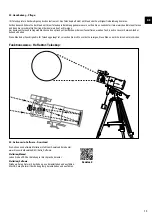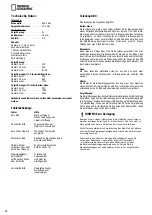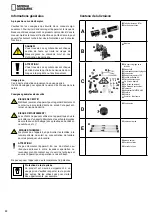
EN
7
13. Handling - Getting Ready:
A dark location is very important for most observations, because
disturbing lights can impair your night vision.
Do not observe from enclosed areas. We recommend setting up your
telescope at least 30 mins before beginning your observation, in order
to guarantee a temperature balance. You should also make sure that
the telescope is placed on a stable and even ground. It is best if you
accustom yourself with the telescope and get used to its features
during the day. This will enable you to better use your telescope.
14. Handling - Balance:
I
H
To avoid damages to sensitive parts of the mount,
the two axis must now be balanced before observation.
By loosening the fixing screws (I) and tilting the weight rod into a
horizontal position the rectascension axis can be balanced. Now adjust
the counterweight (H) on the rod, until the OTA and the weight remain in
a horizontal position. Retighten the fixing screw (I) on the rectascension
axis.
A
D
The declination axis can be balanced by loosening the fixing screw (D)
on the declination axis. Then the screws on the OTA bracket (A) must
be loosened. Then move the tube as long as it remains in a horizontal
position.
Do not forget to retighten the fixing screws.
15. Handling - Alignment:
L
Now point the entire telescope with the OTA opening at the front,
towards north. Use a compass if you have one.
To do this, you have to loosen the locking screw (L). Then you can
turn the telescope OTA in accurate northern direction. Retighten the
locking screw (L).
16.
Handling - Latitude:
F
C
G
G
D
Now adjust the latitude axis (F) (Poleheight), by loosening the fixing
screw (G). Change the angle by using the adjustment screw (G).
The degree at which you set the axis depends on the degree of
latitude of your location (for example London 51°, Dublin 53°, Glasgow
56°, Manchester 53°, Birmingham 52°, Cork 52°).
Do not forget to retighten the fixing screw.
Then set the declination axis (C), by opening and closing the fixing screw
(D), to 90°. The telescope is aligned in parallel with the earth‘s axis.
TIP: The degrees of latitude of your exact location can always be
found in an atlas, on the right or left edge of a map or on the internet.
17.
Handling - Viewfinder:
The telescope is now roughly aligned and adjusted.
In order to obtain a comfortable observation position, you should
loosen the screws on the OTA bracket (A), so that you can rotate the
telescope tube. Bring the eyepiece and the viewfinder into a position
in which it is comfortable for you to look through both.
The fine alignment is done by using the finder scope. Look through
the finder scope and center Polaris in the middle of the finder scope.
Use the flexible handles of the rectascension axis (K) and of the
declination axis (E) for fine adjustments.
Important: The declination handle (E) is only adjustable to a maximum
of approximately 30 degrees.


